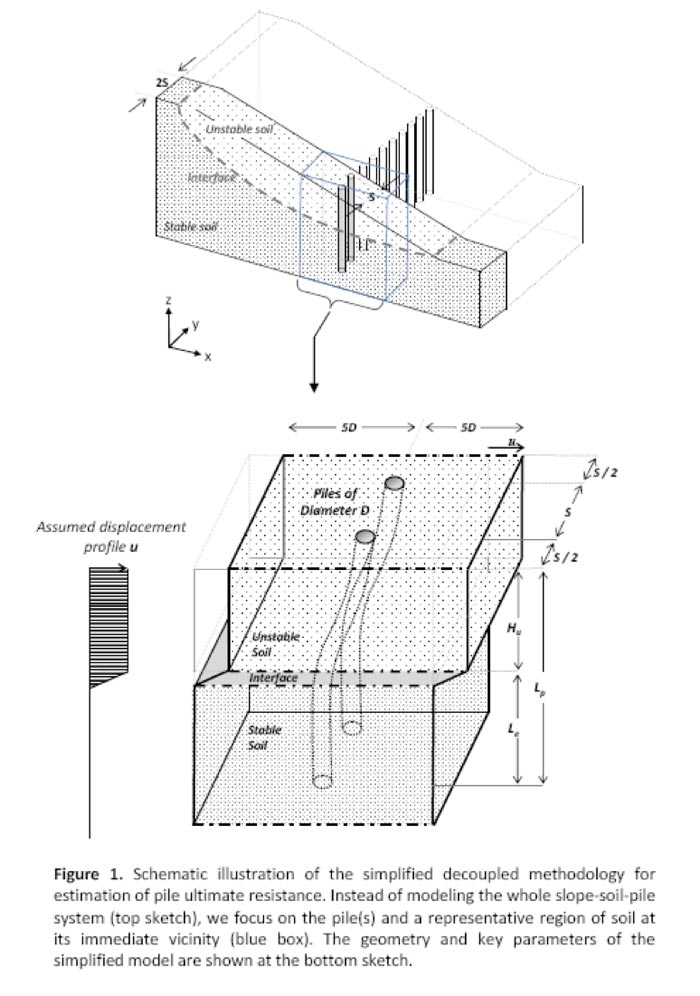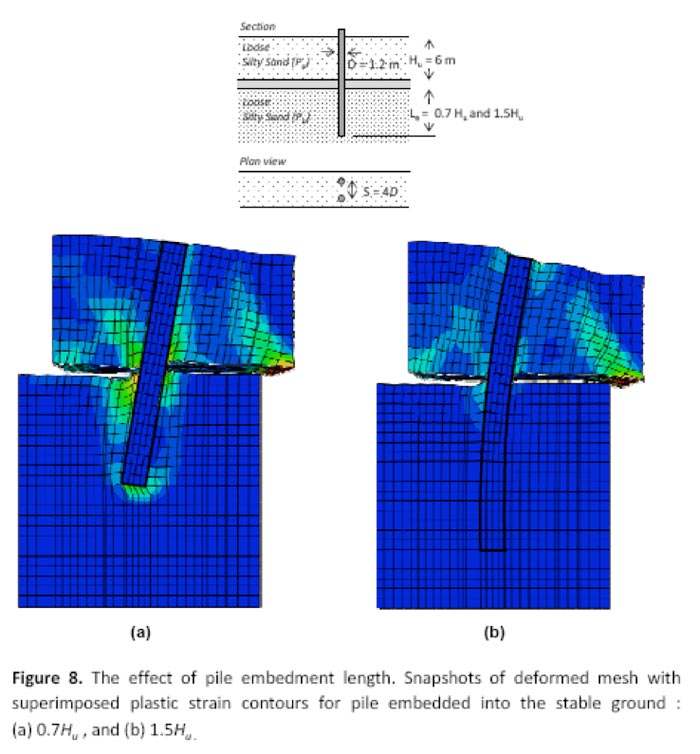Interaction of foundation-structure systems with seismically precarious slopes: Numerical analysis with strain softening constitutive model
A numerical methodology introduced for analyzing the performance of isolated and raft foundations carrying either a uniform surcharge load or a moment-resisting frame, when they are located near the crest of slopes, precarious to earthquake triggered landslides. Plane-strain nonlinear finite element dynamic analyses were employed. The soil constitutive model is calibrated against published data to simulate the (post-peak) softening behavior of soil during a seismic event and under the action of gravitational forces. The plastic shear zones and the yield accelerations obtained from our dynamic analyses are shown to be consistent with the slip surfaces and the seismic coefficients obtained by classical pseudostatic limiting equilibrium and limit analysis methods. The foundation and frame columns and beams are modeled as flexural beam elements, while the possibility of sliding and detachment (separation) between the foundation and the underlying soil is considered through the use of special frictional gap elements.
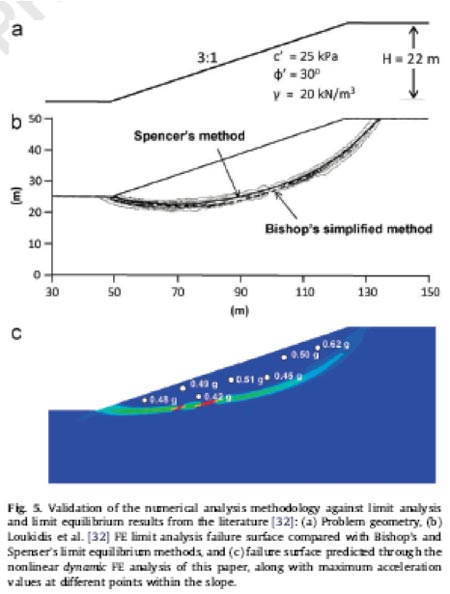
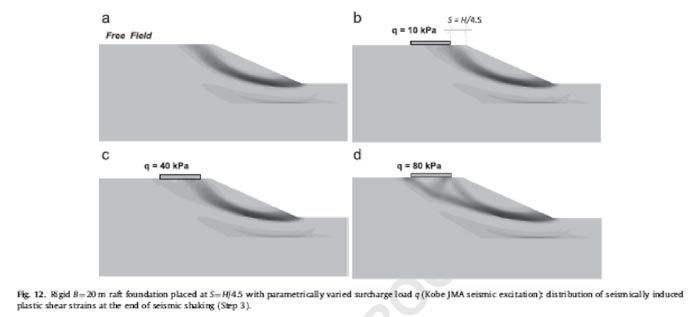
Hybrid Method for Analysis and Design of Slope Stabilizing Piles
Piles are extensively used as a means of slope stabilization. Despite the rapid advances in computing and software power, the design of such piles may still include a high degree of conservatism stemming from the use of simplified easy to apply methodologies. LSM has developed a hybrid method for designing slope stabilizing piles, combining the accuracy of rigorous 3D finite element (FE) simulation with the simplicity of widely accepted analytical techniques. It comprises two steps : (a) evaluation of the lateral resisting force RF needed to increase the safety factor of the precarious slope to the desired value, and (b) estimation of the optimum pile configuration offering the required RF for a prescribed deformation level. The first step utilizes the results of conventional slope stability analysis. A novel approach is proposed for the second step. This consists of the decoupling of the slope geometry from the computation of pile lateral capacity, which allows numerical simulation of only a limited region of soil around the piles.
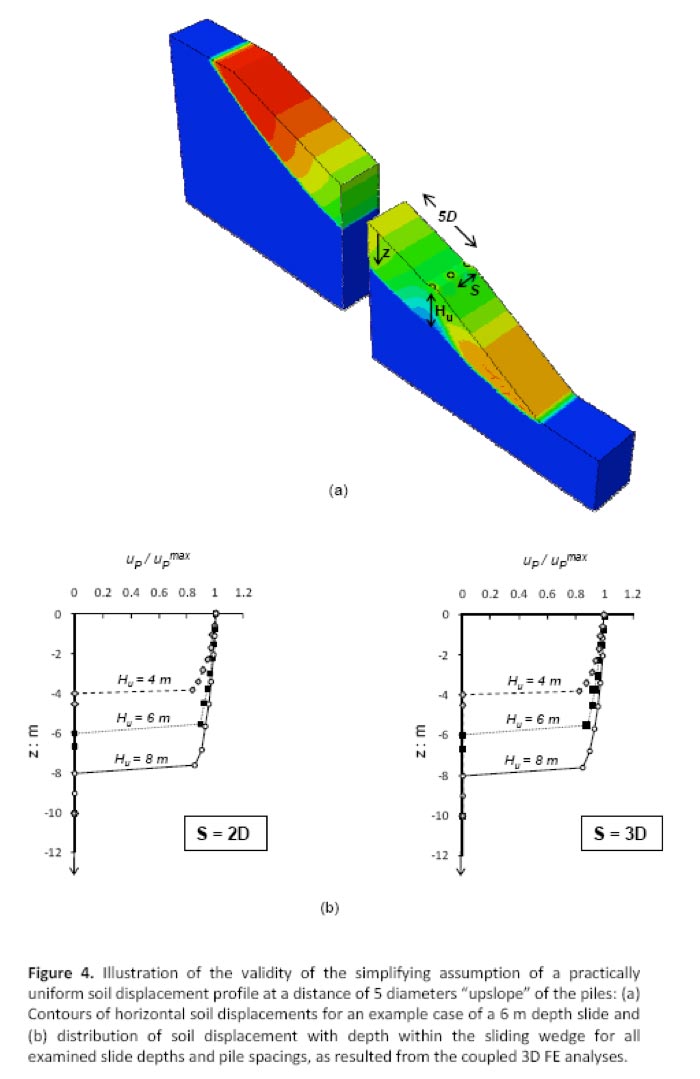
Slope Stabilizing Piles and Pile−groups : Parametric Study and Design Insights
A hybrid methodology for design of slope stabilizing piles was presented and thoroughly validated in Kourkoulis et al. [2010], which comprises two steps. A novel approach was developed for the second step, decoupling slope geometry from the computation of pile lateral capacity, thus allowing numerical simulation of only a limited region of soil around the piles. The LSM team has further investigated the present problem, exploiting parametrically this decoupled analysis method to derive insights on the factors affecting the response of piles and pile groups (pile nonlinearity, pile spacing, inhomogeneity of the unstable soil layer, the strength of the stable soil layer, the depth of pile embedment into the stable layer). Dimesnionless design charts are produced for a specific example, to illustrate the effectiveness of the proposed method in practice.
